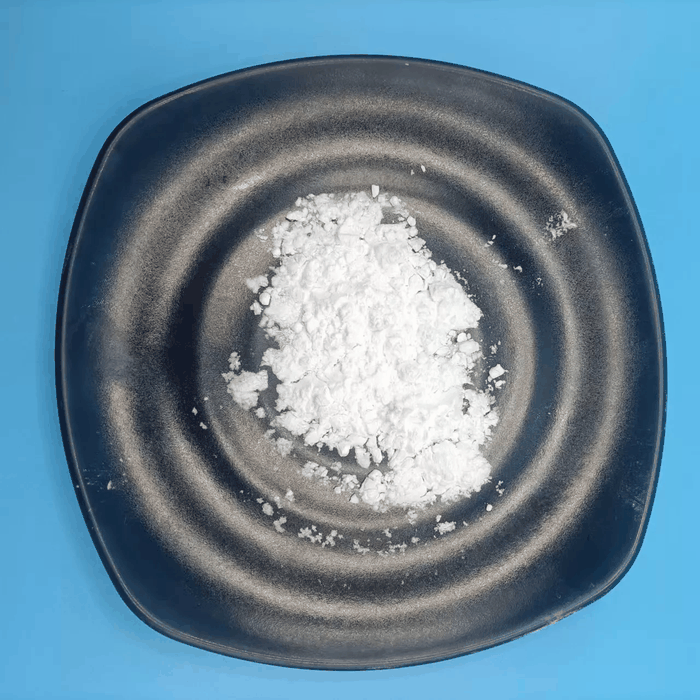2-Picolinic acid
Synonym(s):α-Picolinic acid;2-Pyridinecarboxylic acid;Picolinic acid;Pyridine-2-carboxylic acid
- CAS NO.:98-98-6
- Empirical Formula: C6H5NO2
- Molecular Weight: 123.11
- MDL number: MFCD00006293
- EINECS: 202-719-7
- SAFETY DATA SHEET (SDS)
- Update Date: 2025-01-27 09:38:02

What is 2-Picolinic acid?
Chemical properties
Off-white to tan powder. easily soluble in glacial acetic acid, almost insoluble in ether, chloroform and carbon disulfide.
The Uses of 2-Picolinic acid
1.Chelation of Alkaline Earth Metals:
2-Picolinic acid serves as a chelating agent for alkaline earth metals, which is important in various chemical processes and analyses.
2. Preparation of Metal Complexes:
It is also utilized in the synthesis of transition metal complexes where it acts as a picolinato ligand, enhancing the stability and properties of these complexes.
3. Synthetic Organic Chemistry:
In the field of synthetic organic chemistry, 2-picolinic acid has been employed as a substrate in two specific reactions:
Mitsunobu Reaction: A reaction that is used for the inversion of stereochemistry at a carbon center, among other transformations.
Hammick Reaction: A reaction that involves the use of 2-picolinic acid, contributing to the synthesis of various organic compounds.
Definition
ChEBI: Picolinic acid is a pyridinemonocarboxylic acid in which the carboxy group is located at position 2. It is an intermediate in the metabolism of tryptophan. It has a role as a MALDI matrix material and a human metabolite. It is a conjugate acid of a picolinate.
What are the applications of Application
2-Picolinic acid is used in the preparation of 2-Aminodihydro[1,3]thiazines as BACE 2 inhibitors and their preparation and use in the treatment of diabetes.
Metal complexes of picolinic acid were prepared by the refluxion of metal salts and picolinic acid in ethanol taking 1:3 molar ratio for 6 hours. The solutions were concentrated and cooled, to crystallize out the complexes.The complexes were washed with ether to remove the excess ligand.
Synthesis
2-Picolinic acid synthesis: In a 500ml three-necked flask, add 100g of 2-cyanopyridine and 200g of deionized water, then start stirring, heat up to 50°C, add 128.2g of 30% sodium hydroxide to the flask, after adding, add Continue to heat up, react under reflux for 4 hours, then distill water, after 50 g of distilled water, cool the reaction solution to 20°C, add 30% hydrochloric acid, adjust the pH value of the reaction solution to 2.5, then turn on the steam to heat up the water and steam to the kettle When the temperature reaches 120°C, the reaction solution is evaporated to dryness, and the distilled water is completed. Then, 300 g of anhydrous alcohol is added dropwise to the flask to maintain the temperature of the reaction solution at 55°C. After cooling and crystallization, a solid was precipitated, filtered and dried to obtain 106.0 g of 2-picolinic acid with a yield of 89.6%.
Description
2-Picolinic acid is an alkaline earth metal chelate that can be used to prepare picolinic acid-coordinated transition metal complexes.
Purification Methods
Crystallise the acid from water or *benzene. The picrate has m 185-187o (from MeOH). [Beilstein 22 H 33, 22 I 502, 22 II 30, 22 III/IV 303, 22/2 V 3.]
Properties of 2-Picolinic acid
| Melting point: | 139-142 °C (lit.) |
| Boiling point: | 229.19°C (rough estimate) |
| Density | 1.3147 (rough estimate) |
| vapor pressure | 0.028Pa at 25℃ |
| refractive index | 1.5423 (estimate) |
| Flash point: | 139°(232°F) |
| storage temp. | Store below +30°C. |
| solubility | H2O: 50 mg/mL, clear |
| form | Crystalline Powder |
| pka | 1.07(at 25℃) |
| color | White to almost white |
| PH | 3.1 (50g/l, H2O, 20℃) |
| Water Solubility | 887 g/L (20 ºC) |
| Merck | 14,7403 |
| BRN | 109595 |
| CAS DataBase Reference | 98-98-6(CAS DataBase Reference) |
| NIST Chemistry Reference | 2-Pyridinecarboxylic acid(98-98-6) |
| EPA Substance Registry System | 2-Pyridinecarboxylic acid (98-98-6) |
Safety information for 2-Picolinic acid
| Signal word | Danger |
| Pictogram(s) |
 Corrosion Corrosives GHS05  Exclamation Mark Irritant GHS07 |
| GHS Hazard Statements |
H302:Acute toxicity,oral H318:Serious eye damage/eye irritation |
| Precautionary Statement Codes |
P264:Wash hands thoroughly after handling. P264:Wash skin thouroughly after handling. P270:Do not eat, drink or smoke when using this product. P280:Wear protective gloves/protective clothing/eye protection/face protection. P301+P312:IF SWALLOWED: call a POISON CENTER or doctor/physician IF you feel unwell. P305+P351+P338:IF IN EYES: Rinse cautiously with water for several minutes. Remove contact lenses, if present and easy to do. Continuerinsing. P501:Dispose of contents/container to..… |
Computed Descriptors for 2-Picolinic acid
| InChIKey | SIOXPEMLGUPBBT-UHFFFAOYSA-N |
New Products
Methyl (R)-1-Boc-4,4-difluoropyrrolidine-2-carboxylate 2,2-Difluoropropylamine hydrochloride tert-butyl 3-bromoazetidine-1-carboxylate (R)-1-Boc-3-hydroxypyrrolidine DIFLUOROACETIC ANHYDRIDE 2,2-Difluoropropionic acid Diallylamine, 99% Calcium hydroxide, 95% Aluminum oxide, basic 2-Bromophenylacetonitrile, 97% L-tert-Leucine,97% N-Hydroxy-2-methylpropanimidamide 4-(3,4-Dichlorophenyl)-3,4-Dihydro-N-Methyl-1-(2H)-Naphthalenimine (Schiff Base) 2-AMINO-3,5-DIBROMO BENZALDEHYDE [ADBA] L-Glutamic Acid Dimethyl Ester Hcl 10-Methoxy-5H-dibenz[b,f]azepine 5-Cyanophthalide N, N-Carbonyldiimidazole (CDI) Dibenzoyl Peroxide Titanium Dioxide 2-(Methylthio) Benzonitrile Sodium Acetate Anhydrous Allopurinol 1,5-DibromopentaneRelated products of tetrahydrofuran








You may like
-
 Picolinic acid 98-98-6 98%View Details
Picolinic acid 98-98-6 98%View Details
98-98-6 -
 Picolinic acid 98%View Details
Picolinic acid 98%View Details
98-98-6 -
 a-Picolinic Acid pure CAS 98-98-6View Details
a-Picolinic Acid pure CAS 98-98-6View Details
98-98-6 -
 2-Picolinic acid CAS 98-98-6View Details
2-Picolinic acid CAS 98-98-6View Details
98-98-6 -
 Pyridine-2-carboxylic Acid CAS 98-98-6View Details
Pyridine-2-carboxylic Acid CAS 98-98-6View Details
98-98-6 -
 Picolinic acid 98%View Details
Picolinic acid 98%View Details
98-98-6 -
 Picolinic acid 97% CAS 98-98-6View Details
Picolinic acid 97% CAS 98-98-6View Details
98-98-6 -
 2-Picolinic acid CAS 98-98-6View Details
2-Picolinic acid CAS 98-98-6View Details
98-98-6
